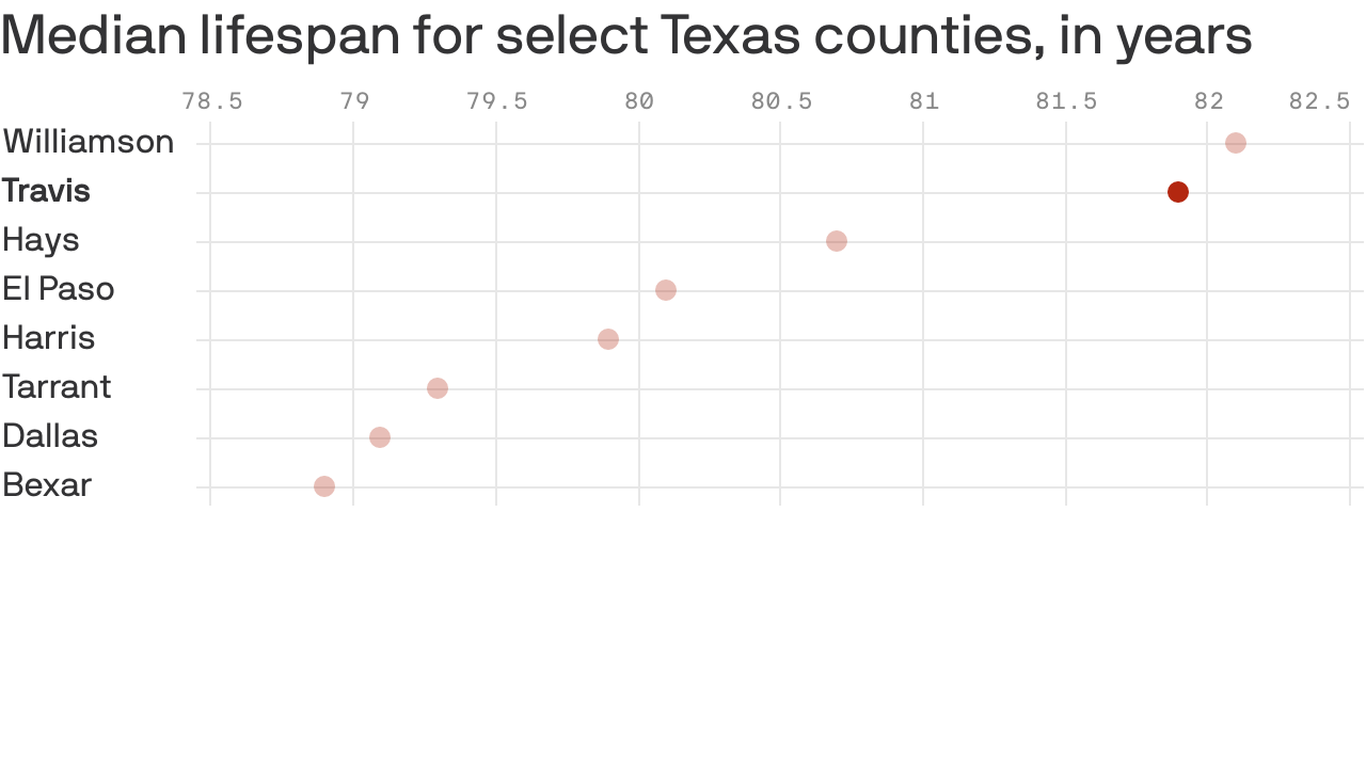Kids live longer in Central Texas
Data: University of Wisconsin Public Health Institute; Illustration: Danielle Alberti / Axios
Home of Austin, Travis County has the longest average life expectancy – by far – of virtually any major urban county in Texas, according to an Axios county-by-county analysis of population data.
The big picture: Austin is also wealthier, better educated, and generally has a smaller Latino population than its counterparts, experts say of Axios – variables that are well measured by life expectancy.
According to the numbers: A child born in Travis County today can live an average of 81.9 years – or two years longer than a child born in Harris County, home of Houston, almost three more than one in Dallas County, and three longer than a child born in Bexar County (home of San Antonio).
- El Paso County and Tarrant County (home of Fort Worth) are all nearly two or more years behind Travis.
Yes but: Some historically suburban white-majority counties have longer average life expectancies. Collin County, part of the North Texas Metroplex, is 82.7 years old.
Zoom in: Crossing the University of Wisconsin’s life expectancy data with race and poverty data from the US Census Bureau, Axios found that Travis has a lower percentage of African Americans and poverty, and more of its residents have bachelor’s degrees and higher incomes than Bexar. Dallas and Harris.
- Half of Travis County’s residents over the age of 25 have at least a bachelor’s degree; Harris and Dallas counties 31.5% and Bexar 28%.
- One-tenth of Travis County’s residents live in poverty; in Harris County it is 15%.
- Travis County is 8.9% black; Harris is 20% and Dallas is 23.6%.
- Bexar County is 60.7% Latinos; Travis is 33.6% and also follows Harris and Dallas counties.
Remarkable: Austin city demographer Lila Valencia tells Axios that district life expectancy “may hide some of the district-level differences”.
- “You can expect finding lower life expectancy in areas of Travis County with greater proportions of African American people, households in poverty, lower median incomes and lower levels of education, “she said.
- Structural barriers, such as the lack of health care and healthy eating, at every stage of life have created a strong racial divide in the health of Americans.
The bottom line: The results come as Austin’s black population continues to dwindle amid an affordable housing and gentrification crisis.
- In 1990, black residents made up more than 12% of the city’s population. Now it is 6.9%.
Continue reading: See how life expectancy is tracked with the race, sometimes unexpected
[ad_1]


